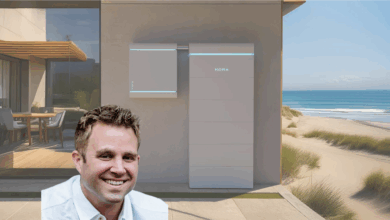Almost nine in ten councils have declared a climate emergency – but faced with multiple, often contradictory, pressures and targets, how many have any confidence in the next steps to take? Most have highlighted the challenges of balancing carbon targets with budgetary constraints. Many recognise the problem in achieving change – especially retrofitting an extensive building estate with smart environmental technology – without massive, unpopular citizen upheaval.
Very few, however, realise that the strategies they are planning to adopt to determine the current state of carbon emissions, namely collecting vast quantities of data and storing it in the cloud, are creating a huge additional carbon footprint that could undermine any chance of achieving carbon neutral status for years to come. Technology infrastructure and data storage is already one of the biggest contributors to carbon emissions – so where is the justification for adding enormous quantities of cloud based environmental data to the mix?
Time is not on the side of any Local Authority. Rather than embarking upon an expensive, carbon draining, speculative smart technology procurement that may never deliver, switched-on authorities should consider pragmatic, tactical and low carbon alternatives that leverage Edge computing to deliver immediate insight, control and results.
Speculative Macro Approach
With the UK’s carbon neutral objectives high on the government agenda, much of the burden is falling on Local Authorities to make essential structural change. There are a number of financial incentives – including the Sustainable Warmth competition and the Local Authority Delivery (LAD) scheme, as well as Local Energy Hubs – but with a complex building portfolio, extending from offices to housing, what is the best approach to improve energy efficiency, move to low-carbon heat, and embrace smart technologies across all these building?
The great news is that there is an inspiring and ever growing array of IT technologies available that can help to reduce carbon footprints. The challenge is to determine what technology to use, where to prioritise and when? Clearly it is essential to understand the current state of play – both to determine the priority areas of change and, hopefully, provide a baseline against which any improvements can be measured. And with the explosion in IoT technology and the promise of ubiquitous 5G networks, much of the thinking is focused on smart cities and smart buildings, technology that can automatically turn off lights, optimise traffic flow and minimise the carbon footprint.
The problem for many Local Authorities is that the approach being encouraged during this ‘assessment and planning’ phase is too speculative, too slow and, by default, has a technology dependency that has a high financial and carbon cost. Macro solutions – such as the smart city promises – have appeal in theory. But they require significant time, infrastructure and resources before any tangible changes can be made or improvements delivered.
Adding Carbon to (maybe) Reduce Carbon
In theory, a smart city will be able to optimise traffic flow to reduce congestion and improve air quality; it should be able to turn off lights to reduce power consumption. But until the entire model is up and running, these ideas cannot be tested at scale – and it is only then that we will discover whether lights can be turned off without compromising citizen safety or if traffic optimization really makes a difference to air quality.
The majority of Local Authorities don’t have the time or money for this macro approach. Even if they had either, where is the justification for the carbon footprint associated with long drawn out procurement processes – something that has yet to be factored into government carbon calculations? Or for the vast infrastructure required to undertake the massive data discovery exercise.
Just consider the recent research about the carbon impact of our mobile phone photo habits. For every photo posted online, we take five more and save them on our Google Photos or Apple iCloud accounts, taking up storage space on server farms that, in turn, contribute to the spiralling carbon emissions. According to the study carried out by the Institution of Engineering and Technology (IET), the glut of digital photos taken by UK citizens alone accounts for over 355,000 tonnes of CO2 emissions every year.
Before any Local Authority embarks upon a smart building or city initiative, it is essential to understand the immediate carbon impact associated with these huge data resources – especially when so much of the data is collected speculatively.
Fast, Informative and Low Carbon
IoT has, of course, a vital role to play. But the IoT deployment model will make a massive difference, not only to the financial and carbon cost, but also speed of actionable insight. Using Edge computing in tandem with IoT minimises data storage and removes the need for expensive data centre infrastructure. Small, low cost Edge devices can be set up immediately, combined with a variety of IoT sensors – for light and heat, for example – to rapidly capture the current state of play.
Analysing this data in context – for example, adding weather information – provides a Local Authority with real, usable insights to support carbon neutral plans. Smart technologies can be rapidly trialled, with Edge computing ensuring there is no delay in either performing the required analytics or taking the necessary actions, to optimise the energy efficiency of the building.
This approach puts Local Authorities back in control. It highlights priority areas for intervention; but also encourages a far more pragmatic, immediate response. If the problem is office workers failing to turn off lights, rather than investing in an expensive, smart AI solution to manage the lights, Edge computing using gamification to encourage behavioural change will reduce energy usage at a much lower cost with a correspondingly low carbon overhead. When smart tech needs to be evaluated, the fast deployment of IoT sensors and Edge computing will allow Local Authorities to establish the real value of their smart tech – for example, setting up two identical family houses with Edge IoT sensors, insulating one and giving it a smart meter and comparing the energy usage to the other uninsulated, unmetered one. Edge supports a fast, focused and pragmatic approach that will rapidly deliver real actionable insights.
Practical and Pragmatic
Time is not on anyone’s side. There is no money for long drawn out procurement or intensive data collection. Local Authorities need a way to quickly identify the biggest contributors to their carbon footprint; and the ability to determine how best to mitigate the problem. Edge computing and IoT offers a tactical approach that not only provides rapid insight but also facilitates the innovation and experimentation that will underpin any successful carbon neutral strategy.
There are so many compelling green technologies coming to the market today; some will work, some won’t. Each has a cost associated; some can be implemented quickly; others will require significant changes. All will have to be tried in a real-world environment to determine their efficacy – as well as their wider citizen impacts. Pragmatism is key. There is no room for speculation – and no justification for massive carbon consuming cloud based data storage. Local Authorities empowered with a fast, low cost, low carbon approach to evaluating options will make swift progress – while the rest continue to store up even more carbon problems for the future.



